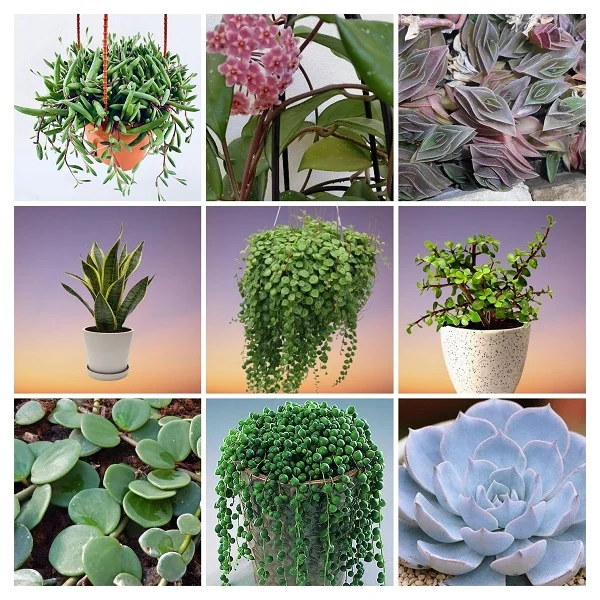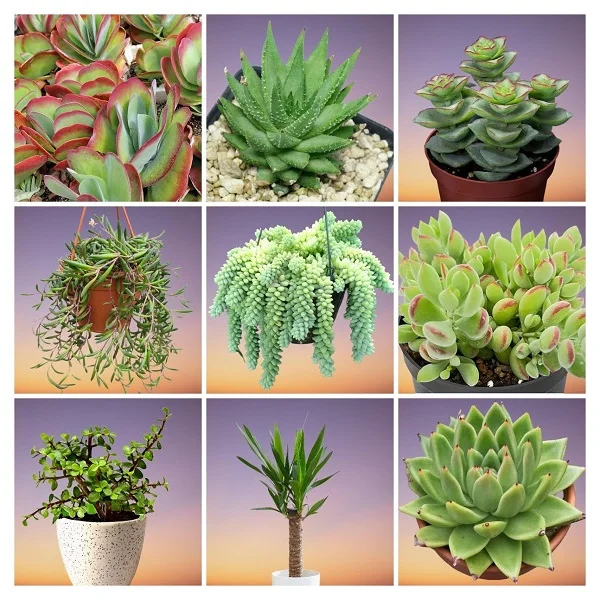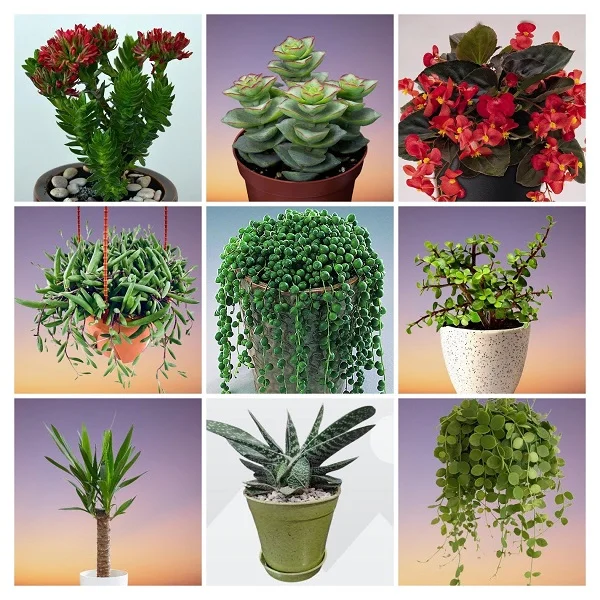Cotyledon pendens (Cliff Cotyledon) Indoor Care, Propagation, Problems and Solutions
Some links in this post may be affiliate links
Cotyledon pendens (Cliff Cotyledon) thrives in bright light with 4-6 hours of direct sunlight, average warmth, moderate humidity and moderately moist, well-drained soil coupled with monthly feeding in the growing season.
Cliff Cotyledon is a trailing, multi-branched succulent with thick stems which are packed with short, fleshy, oval-shaped leaves and covered with a powdery grey coat.
The leaves occur in opposite bears along the stem and have a reddish tinge at the tips in bright light or sunshine. The thick stems start off upright but begin to trail at the weight of the leaves and bend downwards, hence, the species name, 'pendens'.
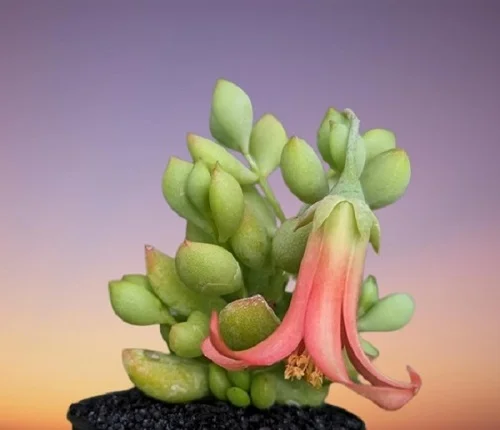
Botanical name: Cotyledon pendens
Family: Crassulaceae
Common names: Cliff Cotyledon Succulent, Cliff Cotyledon pendens
What is the Cotyledon pendens habitat?
Cotyledon pendens is native to South Africa along Bashe River in Eastern Cape where it is found hanging down sheer cliffs faces in summer, hence, the common name, 'Cliff Cotyledon'.
Size
Cliff Cotyledon Succulent bears trailing stems of about 2 feet long which makes it perfect for the limited spaces in the home, office and other places.
Flowers
Cliff Cotyledon flowers in mid-summer with large, orange-red, bell-shaped flowers which are borne at the end of the trailing stems.
Are Cotyledon pendens toxic?
Cotyledon pendens like other Cotyledon plants are considered toxic to both humans and pets. As outlined by Wikipedia, some plants in the Cotyledon Genus have been found to cause stock losses among goats, pigs and poultry.
Related Plants
Cliff Cotyledon is closely related to the following plants which are also great plants for the home.
1. Cotyledon undulata (Silver Crown Plant)
2. Cotyledon orbiculata (Pig's Ear Plant)
3. Cotyledon campanulata (Bell-flowered Cotyledon)
4. Cotyledon tomentosa (Bear's Paw Succulent)
5. Cotyledon velutina (Velvet Cotyledon)
Where to Buy
Would you like to add Cliff Cotyledon pendens to your plant collection? You may acquire these plants online from Etsy (Link to Etsy).
How do you care for Cotyledon pendens indoors?
To care for Cotyledon pendens indoors, provide bright light with 4-6 hours of direct sunlight, average warmth of 15-260C, moderate humidity of 50-55% and moderately moist, loose, well-drained soil coupled with monthly feeding during the growing season.
Cliff Cotyledon care requires repotting to be done only needed when it becomes pot-bound or when the potting medium is completely broken down. Pruning is necessary to keep the plant neat, to control growth and to minimize pest and disease infestations. Keep reading for more on these growing conditions and how to achieve them.
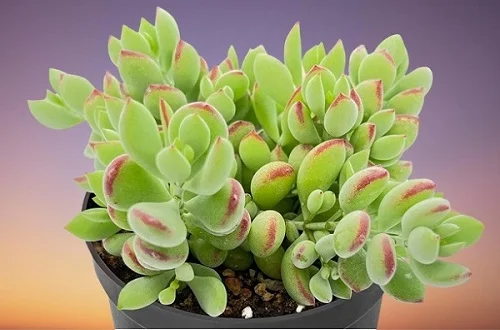
Watering
How often should I water Cotyledon pendens?
Cotyledon pendens is best watered by the 'soak and dry' method. Water liberally in spring and summer until water comes out through the drainage hole and allow the soil to dry out between waterings. Like all succulents, Cliff Cotyledon hates overwatering and soggy soil which can result in rotting and leaf drop.
Decrease watering in fall and winter as growth is minimal at this time, thus, the plant does not need a lot of water for growth. However, do not let the soil dry out completely to avoid wrinkled leaves and leaf drop.
Only use water that is at room temperature to avoid plant shock which can result in reduced growth and leaf drop.
Confirm that the pot has a drainage hole and the soil is fast-draining to prevent the plant from sitting in soggy soil as it can lead to rotting and death of the plant.
Take care not to wet the foliage to avoid fungal diseases or water from the bottom instead. Always empty the bottom saucer (plate) once the plant has absorbed enough water.
Light Requirements
Do Cotyledon pendens like sun or shade?
Cotyledon pendens likes bright light with at least 4-6 hours of morning or late afternoon sunlight. Keep it away or shield it from hot midday sunshine to prevent scorching of the leaves.
If the light is not adequate, the plant can become leggy with wide spaces between leaf nodes and undersized leaves. It can also lead to leaf drop (falling leaves). Therefore, use grow lights where the natural lighting is not adequate.
Rotate the pot regularly to make sure that the plant receives light on all sides for even growth and prevent legginiess.
Cliff Cotyledon Succulent can be grown outdoors, however, gradually acclimate it and place it in a shaded place first to prevent scorching of the leaves.
Temperature and Humidity
Cotyledon pendens requires an average warmth of 15-260C during the growing season and a minimum of 100C in the cold season. Keep it away from frost and cold drafts like windy doors and windows, air conditioning units among others as prolonged exposure can cause leaf drop and the death of the plant.
Cliff Cotyledon Succulent has no need for extra humidity. Average room humidity of 50-55% is ideal for this plant. Make sure that there is good air circulation and do not mist it to prevent fungal disease infestations which are prevalent in damp, poorly ventillated conditions.
Fertilizer
What is the best fertilizer for Cotyledon pendens?
Feed your Cotyledon pendens with a cactus and succulents fertilizer every 4 weeks in spring and summer to promote a lush growth.
Do not feed in fall and winter as growth is reduced and feeding at this time can lead to fertilizer burn and eventual death of the plant.
Potting Soil
Cliff Cotyledon soil should be coarse, low in organic matter and one that drains fast to prevent it from holding excess water. The soil should be loose enough to allow water to drain out quickly. Cactus and succulents soils are good for this plant.
Repotting
When to repot Cotyledon pendens?
Repot your Cotyledon pendens at the beginning of the growing season, only when it has become pot-bound or when the potting medium has completely broken down.
How to repot Cotyledon pendens?
- Select a pot that is 1 size larger than the current one to avoid overpotting and retention of excess moisture.
- Go for a clay pot instead of a plastic or ceramic pot as a clay pot is porous and allows the soil to dry out faster to keep it from staying wet for too long. Take a look at these terracotta pots available on Amazon.
- Use a pot with a drainage hole to prevent the soil from getting soggy to prevent rotting.
- Ascertain that the soil is dry before repotting to prevent rotting.
- Slip the plant out of its pot and brush off soil from the roots.
- Snip off any dead or dry roots and treat the wounds with a fungicidal solution.
- Place the plant in the center of the new pot and back fill with fresh, loose, fast-draining soil while spreading the roots as you fill the pot.
- Do not fill the pot completely but allow a space of about 1 inch unfilled for watering purposes.
- Replace the plant to its display position and keep it dry for about 5-7 days to minimize the risk of rot-root.
Pruning & Grooming
Pruning Cliff Cotyledon Succulent involves:
- Removal of dead or diseased leaves to keep it neat and also discourage pest and disease infestations. Snip the leaves at the base with a sterilized knife or pair of scissors to prevent diseases transmission.
- Cut back the stems at the beginning of growing season if they become straggly to rejuvenate growth and encourage a compact, bushy growth. Minimize the number of cuts as much as possible to avoid unnecessary injuries to discourage fungal disease infestations.
Clean the leaves with a soft brush to get rid of dust and also discourage pests and diseases infestations.
Cotyledon pendens Propagation
How do you propagate Cotyledon pendens?
Cotyledon pendens is best propagated from stem cuttings or leaf cuttings at the beginning of the growing season (spring to early summer) when it is in active growth.
Propagating Cotyledon pendens from stem cuttings
- Take 3-5 inches stem cuttings from a healthy plant.
- Allow the cutting to dry out (callus) for a few days to prevent rotting.
- Once callused, insert the lower cut end of the stem cuttings in moist, fast-draining, rooting soil.
- Place the set up in a well-lit, warm place away from direct sunlight and ensure that there is good air circulation to discourage fungal diseases.
- Maintain the soil slightly moist until the stem cuttings have rooted. Rooting may take upto 4 weeks.
- Allow substancial growth before transplanting the new plants after which routine care can begin.
Propagating Cotyledon pendens from leaf cuttings
- Take leaf cuttings complete with the petiole from a healthy plant.
- Allow the leaf cutting to dry out (callus) for a few days to prevent rotting.
- When calloussed, lay the leaf cutting on moist, fast-draining, rooting mix while ensuring that the cut end does not come into contact with the soil to prevent rotting.
- Postion the set up in a warm, well-lit place away from direct sunlight to prevent scorching of the leaf cuttings.
- Maintain the soil slightly moist through out. Ensure that there is good air circulation to prevent fungal diseases.
- With time, the leaf cutting will form roots and eventually a small rosette will form at the base of the leaf cutting. This may take from 4-6 weeks.
- Allow substancial growth of the rosette before transplanting the new plants into its own pot after which routine care can begin.
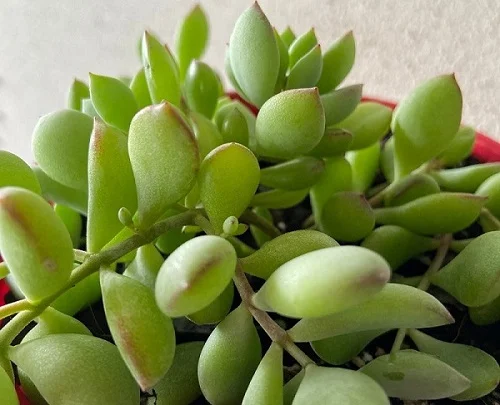
Cotyledon pendens Problems & Remedies
Cotyledon pendens (Cliff Cotyledon) problems are falling leaves, yellowing leaves, leggy growth, wrinkled and droopy leaves, pests and diseases among others. Keep reading for more on these problems and how to solve them.
Falling leaves
Why are my Cotyledon pendens leaves falling off?
Your Cotyledon pendens leaves are falling off due to inconsistent watering, soggy soil, too little light, temperature stress, cold water, excessive touching or movement, and pests infestation.
How to fix it
Inconsistent watering: Do not water on a schedule. Water when the top 2-3 inches of soil feel dry but do not allow the soilball to dry out completely.
Soggy soil: Ensure that the pot has a drainage hole and the soil is loose and free-draining.
Too little light: Position the plant in bright light with at least 4-6 hours of direct sunlight or instal a grow light if the natural lighting is not sufficient.
Temperature stress: Keep the plant away from drafts coming from windy windows and doors, air conditions units, stoves, hot air vents among others. Maintain a warmth of of 15-260C.
Cold water: Use water that is at room temperature to avoid shocking this tropical plant.
Excessive touching or movement: Keep the plant away from the line of traffic and avoid unnecessarily moving it around and take care when moving it.
Pests infestation: Regularly check between the leaves for these pests and carry out timely control measures.
Yellow leaves
Why are the leaves on my Cotyledon pendens turning yellow?
Some of the causes of yellow leaves on your Cotyledon pendens are overwatering, soggy soil, temperature stress, too little light, too much sunlight, and nutrient deficiency.
How to fix it
Overwatering: Do not water on a schedule. Water only when the top 2-3 inches of soil dry.
Soggy soil: Use a well-draining potting soil and a pot that has a drainage hole.
Temperature stress: Keep the plant away from drafts coming from hot surfaces, hot air vents, AC units, windy doors among others.
Too little light: Put the plant in bright light with at least 4-6 hours of direct sunlight or use a grow light if the natural lighting is not adequate.
Too much sunlight: Position the plant away from too much sunshine or instal a sheer curtain to filter it.
Nutrient deficiency: Apply a succulents fertilizer every 4 weeks in spring and summer.
Leggy stems
Leggy stems on Cotyledon pendens are caused by overwatering, soggy soil, and too little light.
How to fix it
Overwatering: Water only when the top 2-3 inches of soil dry out. Do not water on a schedule.
Soggy soil: Use a pot with a drainage hole and soil that drains easily.
Too little light: Place the plant in bright light with at least 4-6 hours of direct sunlight or use a grow light if the natural lighting is not enough.
Wrinkled and drooping leaves
Wrinkled and drooping leaves on Cotyledon pendens are caused by underwatering, hot drafts, and hot sunshine.
How to fix it
Underwatering: Water when the top 2-3 inches of soil dry out but do not allow the soil to dry out completely for a prolonged period of time.
Hot drafts: Keep the plant away from hot drafts emanating from stoves, hot air vents and other heat sources.
Hot sunshine: Place the plant away from hot direct sunshine or use a light curtain to filter the sunlight.
Pests
Common pests on Cotyledon pendens are scale insects, mealybugs and spider mites.
How to fix it
- Isolate the affected plant to prevent spread to other plants.
- Treat it with neem oil or insecticidal soap as per the manufacturers' recommendations.
- Check between the leaves for these pests and carry out timely control measures.
- Keep the plant well pruned to minimize the pest infestations.
Diseases
Cotyledon pendens is prone to the following two diseases:
1. Powdery mildew which is prevalent in overwet conditions coupled with poor air circulation. It is characterized by spotting or coating of the leaf surface with a white powdery deposit.
How to fix it
- Isolate the affected plant to minimize spread to other plants.
- Treat the plant with horticultural oil as indicated by the manufacturer.
- Improve ventilation and make sure that there is good air circulation for the plant.
- Water from the bottom to avoid wetting the foliage and always allow the soil to dry out between waterings.
- Do not let the plant sit in soggy soil; always empty the bottom saucer (plate) once the plant has absorbed enough water.
- Use a pot that has a drainage hole and well-draining soil.
2. Leaf spot disease which is prevalent in poorly aerated, overdamp conditions. It presents as brown, soft leaf spots.
How to fix it
- Isolate the affected plant and treat it with systemic fungicide as per the manufacturers' recommendations.
- Avoid wetting the leaves during watering to minimize the disease infestation; you may water from the bottom.
- Maintan good air flow for the plant to discourage the disease.
You liked it? Share on social media.
Related Content
Amazon Associates Disclosure
Homeplantsguide.com is a participant in the Amazon Services LLC Associates Program, an affiliate advertising program designed to provide a means for sites to earn advertising fees by advertising and linking to amazon.com.



